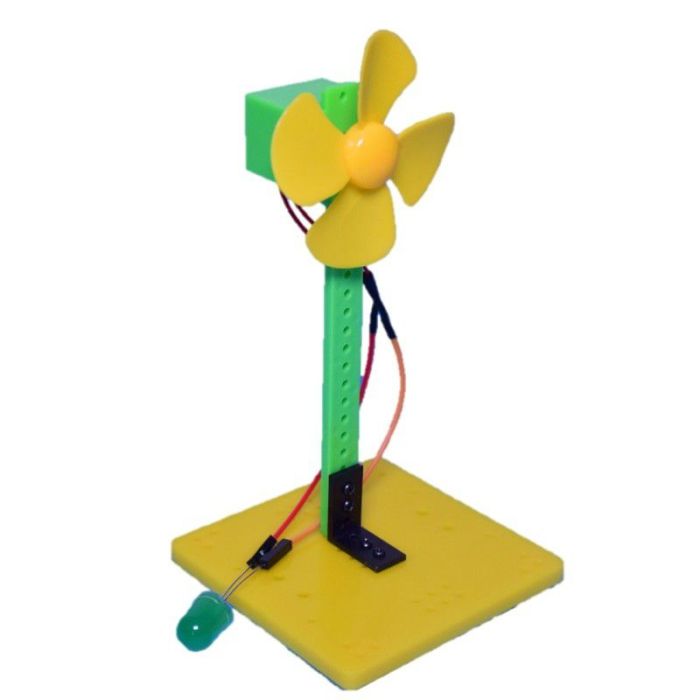DIY Wind: Building Your Own Renewable Energy Source is a comprehensive guide to harnessing the power of the wind for your own energy needs. This guide delves into the fascinating world of wind energy, covering the basic principles, components, design considerations, and practical steps for constructing your own wind turbine.
Whether you’re looking to supplement your home’s energy supply, power a remote cabin, or simply explore the world of renewable energy, this guide will provide you with the knowledge and resources to get started. From understanding the fundamental concepts of wind energy conversion to selecting appropriate materials and designing a safe and efficient turbine, this guide covers all aspects of DIY wind power.
Resources and Further Exploration: Diy Wind

The world of DIY wind power is vast and exciting, and there are many resources available to help you learn more about it. Whether you’re a seasoned engineer or a curious beginner, these resources can guide you on your journey to harnessing the power of the wind.
Reputable Resources for Learning
Here are some reputable resources that can provide valuable information and guidance for your DIY wind power project:
- The American Wind Energy Association (AWEA): AWEA is a leading organization in the wind energy industry, providing comprehensive information on wind power technology, policy, and market trends. Their website offers a wealth of resources, including educational materials, research reports, and industry news.
- The National Renewable Energy Laboratory (NREL): NREL is a U.S. Department of Energy laboratory dedicated to renewable energy research and development. Their website features a wide range of resources, including technical reports, data analysis, and case studies on wind energy.
- The Wind Energy Foundation: This non-profit organization provides educational resources and promotes the development of wind energy. Their website offers information on wind power basics, project development, and environmental impacts.
- The Open Source Wind Turbine Project: This project aims to develop and share open-source designs for wind turbines. Their website provides detailed plans, documentation, and community forums for collaboration.
Books and Websites, Diy wind
For those who prefer a more in-depth exploration, here are some recommended books and websites:
- “Wind Power: A Handbook” by P.W.H. Lewis: This comprehensive handbook covers the fundamentals of wind energy, turbine design, and system integration. It is a valuable resource for both beginners and experienced professionals.
- “The Wind Power Handbook” by James Manwell, Jon McGowan, and Anthony Rogers: This book provides a detailed overview of wind energy technology, including turbine design, wind resource assessment, and grid integration. It is an excellent resource for those interested in the technical aspects of wind power.
- “Wind Energy Explained: Theory, Design and Application” by T. Burton, D. Sharpe, N. Jenkins, and E. Bossanyi: This book offers a thorough explanation of wind energy theory, turbine design, and application. It is a great resource for those who want a deep understanding of the subject.
- “Wind Power for Beginners” by Michael H. Hart: This book provides a user-friendly introduction to wind energy, covering the basics of turbine design, system installation, and environmental impacts.
- Windpower Engineering: This website offers a wealth of information on wind energy, including technical articles, case studies, and industry news.
- Wind Turbine Design: This website provides a comprehensive guide to wind turbine design, covering topics such as aerodynamics, blade design, and control systems.
Organizations Dedicated to Wind Energy
These organizations are actively involved in promoting wind energy and supporting its development:
- The Global Wind Energy Council (GWEC): GWEC is a global association representing the wind energy industry. They provide information on wind energy policy, market trends, and technology advancements.
- The World Wind Energy Association (WWEA): WWEA is a non-profit organization dedicated to promoting wind energy worldwide. They offer resources on wind energy technology, policy, and education.
- The International Energy Agency (IEA): IEA is an intergovernmental organization that focuses on energy policy and technology. They provide insights into the global wind energy market and its potential.
Further Exploration and Research
The field of wind energy is constantly evolving, with new technologies and innovations emerging all the time. Encourage readers to stay updated on the latest advancements in wind energy technology, such as:
- Offshore wind power: This technology harnesses the strong and consistent winds found over oceans, offering significant potential for large-scale wind energy production.
- Floating wind turbines: These turbines are designed to be anchored in deep water, allowing for wind energy generation in areas where traditional fixed-bottom turbines are not feasible.
- Smart wind farm management: This involves using advanced technologies, such as artificial intelligence and data analytics, to optimize wind farm performance and reduce costs.
Embarking on the journey of building your own wind turbine can be a rewarding experience, offering a sense of accomplishment and a commitment to sustainable living. By following the principles Artikeld in this guide, you can tap into the vast potential of wind energy and contribute to a cleaner and more sustainable future. Remember, safety is paramount, and thorough research, careful planning, and adherence to local regulations are essential for a successful and enjoyable DIY wind power project.
DIY wind projects can be incredibly rewarding, allowing you to harness the power of nature. From building a simple wind chime to creating a more complex wind turbine, the possibilities are endless. If you’re looking for a more substantial DIY project, consider crafting a DIY sofa from pallets , which can be a fun and eco-friendly way to add a unique touch to your home.
Just like wind, the potential for creativity with DIY projects knows no bounds.

